Alexandra and Zenya Molnar
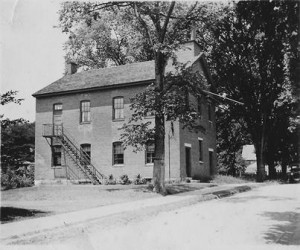
A History of Northborough Schools
Northborough’s school history began shortly after the town was incorporated in 1766. The town strongly believed in its duty to educate its citizens by providing public schools, starting with grammar schools and eventually opening a high school.
Grammar Schools
Though only some of the original schoolhouses remain standing in Northborough today, there were once school houses for each district dispersed throughout the town. Now a town of 14,753 (according to the 2013 annual report), in 1770, there were 85 families in Northborough with children who needed schooling. Therefore in 1780, the town voted to build a schoolhouse in each district into which the town had been divided: North, East, South, and West.
The first four schoolhouses were each 18 square feet and initially constructed entirely of wood. Later, after many of the original structures had burned down, they were all, with the exception of the East District School, rebuilt with brick. Despite the existence of schools, people were still taught in private homes until 1780.
East District
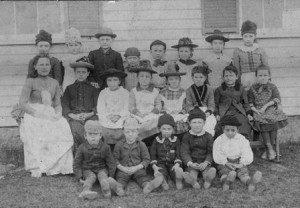
The East District operated from the late 1770s to the 1890s and existed as three different schoolhouses at three different times: the first building was erected near the corner of Maple Street and Ridge Road and burned down Dec. 21, 1865; the second building was built Jan. 9, 1866 on same site as the original; and the third building was located on the corner of Bartlett and Maple streets.
According to one pupil’s school recollections, the East District schoolhouse had a “recitation room” which served multiple purposes. In this room, teachers would listen to students’ recitations as well as administer corporeal punishment. Students used slates, which they washed with sponges, and slate pencils. In addition to rote learning, the students learned songs, enjoyed recess, and ate lunch at school which they brought in “full dinner pails,” according to the former student’s notes.
West District
The West District also existed in three locations: the first school was erected on Ball Hill Road; the second schoolhouse was built in 1795 on Boylston Road (which is now Church
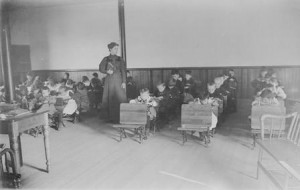
Street); and in 1837 a third schoolhouse was built on the corner of Boylston Road and what is now Brewer Street. The building burned and was replaced by a brick building in 1847 which still stands today as a private residence, 264 Church St.
Recollections of Alice Kimball written in September of 1964 describe the inside of the West District schoolhouse, which she attended: there were two entrances to the school, one for boys and one for girls. The school contained a mix of ages, so seats were assigned according to age and size. The classroom contained a water pail with a dipper that students shared. Students and teachers kept warm with a large black box stove located in the middle of the room.
North School District
The first schoolhouse in the North District was built in the early 1780s. When the first structure burned, a second was built in 1792 on the same site. The third schoolhouse was
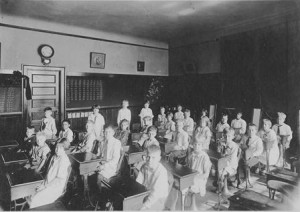
built around 1841 and served as a school until 1895. It is located at 310 Whitney St., which is a different site from the first two, and still stands today as a private residence.
South District
The South District School was built in 1796 and was located on Davis Street near the corner of what is now Southwest Cutoff. In 1841 a brick schoolhouse was erected in place of the original. The school was the first district school to close, in 1887, as the number of pupils declined and it needed repair. One of its notable pupils includes politician John Davis, who served two terms representing Massachusetts as a United States senator, two terms as governor of Massachusetts, and as a member of the U.S. House of Representatives.
Center District
As the East District School became crowded, another school, which became the Center District, was built in 1811 on Main Street near the modern-day White Cliffs. In 1837 the Center District moved into a new schoolhouse called the Center School. The building is
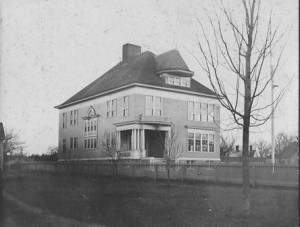
the present Grange and was built in order to accommodate 101 pupils through grade eight. The Center School operated for about 60 years until it was purchased by the Northborough Grange in 1895 and the Hudson Street School was erected.
Factory School
With the opening of the first cotton mill in Northborough, around 1820, many French-speaking Canadians immigrated to Northborough to work in the factories. Even though there was no law that required children to attend school, the Northborough School Committee, in conjunction with the mill owners, voted to open a school for children of factory workers. The Factory School was established in 1880, renamed the Woodside School in the 1920s when the population of factory workers’ children declined, and operated until around 1939. The school had one teacher who was in charge of teaching more than 50 children and young adults, many of whom could not speak English.
The school house was dismantled in the 1950s.
Hudson Street School
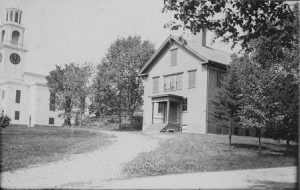
By the fall of 1895, a new schoolhouse, the Hudson Street School, was built to accommodate students from all school districts except the Factory School. The central schoolhouse was located on Hudson Street near the intersection of Main Street.
The two-story Hudson Street School had four large classrooms. It could hold seven to eight grades at one time with about 50 students per room.
The school served students until the 1950s and ‘60s when the current elementary schools and high school were built. Only the sixth grade and special education students attended Hudson Street School after the new elementary schools were built.
The Hudson Street School building remained at its original site until it was razed in 1983 to clear space for senior housing.
The Hudson Street School’s flagpole currently stands at the Northborough Historical Society.
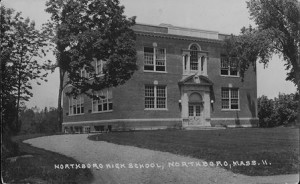
School Populations and Teachers’ Salaries
According to the “Report of the School Committee of the Town of Northborough” for 1896-97, grammar school lasted for 36 weeks while high school was 37 weeks. That year, a high school teacher, all male that school year, earned between $500 and $600 whereas female grammar school teachers were paid between $144 and $360.
In the 1869-70 school year the schools had various class sizes and terms. The high school had 56 students in the spring term and 54 in the fall. The South District only had a spring and fall term with 14 students enrolled in each. On the other hand, the East District had the largest population ranging from 36 to 40 students in all three spring, fall and winter terms. Between 25 and 34 students were enrolled in the North District in all three terms. The West District had between 24 and 29 students throughout the school year.
Individual Recollections
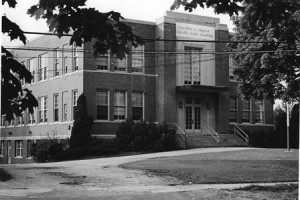
Carol Bostock, whose family has lived for several generations in Northborough, attended the Hudson Street School herself and then later taught in the Northborough school system. Bostock was inspired to teach by her mother who taught at the Woodside Schoolhouse, formerly the Factory School, and Marion E. Zeh Elementary School. As a student, Bostock went home for lunch because the school had no cafeteria. Her high school graduating class was 46 students when the town population was around 3,500. Bostock started teaching four first-grade classrooms at the Hudson Street School in 1963 and moved to Marguerite E. Peaslee School in the fall of the same year. Her starting salary was $4,500. At the Hudson Street School, Bostock used a hand bell at recess and lunch time, as the school had no bells. Also, when she taught, the nurse was not stationed at one particular school. Instead, the nurse served students on-call, wearing a traditional nurse’s uniform.
There was no public kindergarten in Northborough during some time of Bostock’s teaching career, so most children started school not knowing how to read. Also, Bostock recalls using a mimeograph to copy worksheets and there were no overhead projectors.
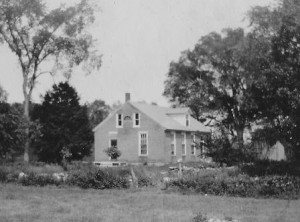
Bostock’s husband, Eugene, also taught fourth and fifth grade at Peaslee and Lincoln Street schools. He remembers Hudson Street School and said that it was a sad day when it was demolished. In particular, he recalled the large, old furnace that he had to kick to get started.
Northborough High School
In 1835, citizens of Northborough realized that there was a need for a high school in the town. The main advantages of a high school would be to attract an experienced teacher who would receive higher wages to a school that is opened longer. The first instance of a high school in Northborough occurred in September 1852 in the upper story of the Center Schoolhouse. The first high school operated for only two terms, or sixth months, before it closed.
Ultimately, the Northborough High School opened in 1866, as the town again found it necessary to have a school that operated for the whole year and for students beyond the age of 16. They believed that opening a high school would encourage children to attend school for a longer time. The first school term, in which 34 students over the age of 12
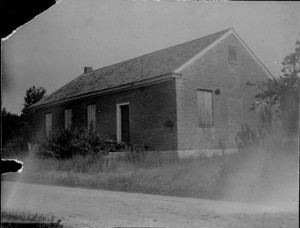
attended, started on May 1, 1866, and ended the last day of June. The school was originally located in the former town hall building of Northborough which was located on land facing Whitney Street near the current Unitarian Universalist Church. The building burned down in 1870 and a new one was built nearby.
Unlike the current tradition at Algonquin Regional High School, graduations did not exist at the high school for several years. In fact, students could stay as long or as little as they wanted before the first graduation occurred in 1878, 12 years after the school was founded.
In the 1870s, students took subjects that resemble the current curriculum of the high school, but they also studied a few subjects that would be unusual to today’s student. The standard courses included arithmetic, geography, grammar, reading and spelling, writing, history, chemistry, drawing and physiology. Latin, German and French were offered as electives. Certain courses were required that students today may wish they could take, including bookkeeping, botany, natural philosophy, rhetoric, astronomy, geology and elementary zoology.
As years passed and the high school became crowded, a new high school was built in 1924
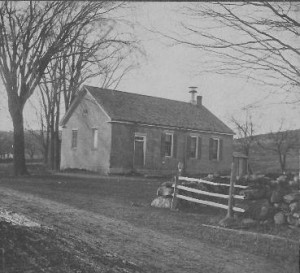
in a location which many Northborough residents would recognize: the current Northborough town offices at 63 Main St. The building burned in 1938 but was rebuilt with an addition to the original design.
A new high school building, Algonquin Regional High School, officially opened in its current location, 79 Bartlett St., Sept. 11, 1959, where it welcomed 444 students, 273 from Northborough and 171 from Southborough. In 1959, the former high school at 63 Main St. became Elwood S. Fraser Junior High School. The junior high school was named after Fraser, who was the principal of Northborough High School from 1938 to 1959.
Modern-day Elementary and Middle Schools
The four elementary schools as they exist today were built between 1950 and 1965. The Marion E. Zeh School was built in 1950. Fannie E. Proctor School opened in 1956. The Marguerite E. Peaslee School was built in 1962. Lincoln Street School opened in 1965. Lastly, the Northborough Middle School, currently called Robert E. Melican Middle school, was built in 1971.
Photos/Northborough Historical Society















